The March of the Patriarch
PeriBlog XXI: Bethlehem, Palestine
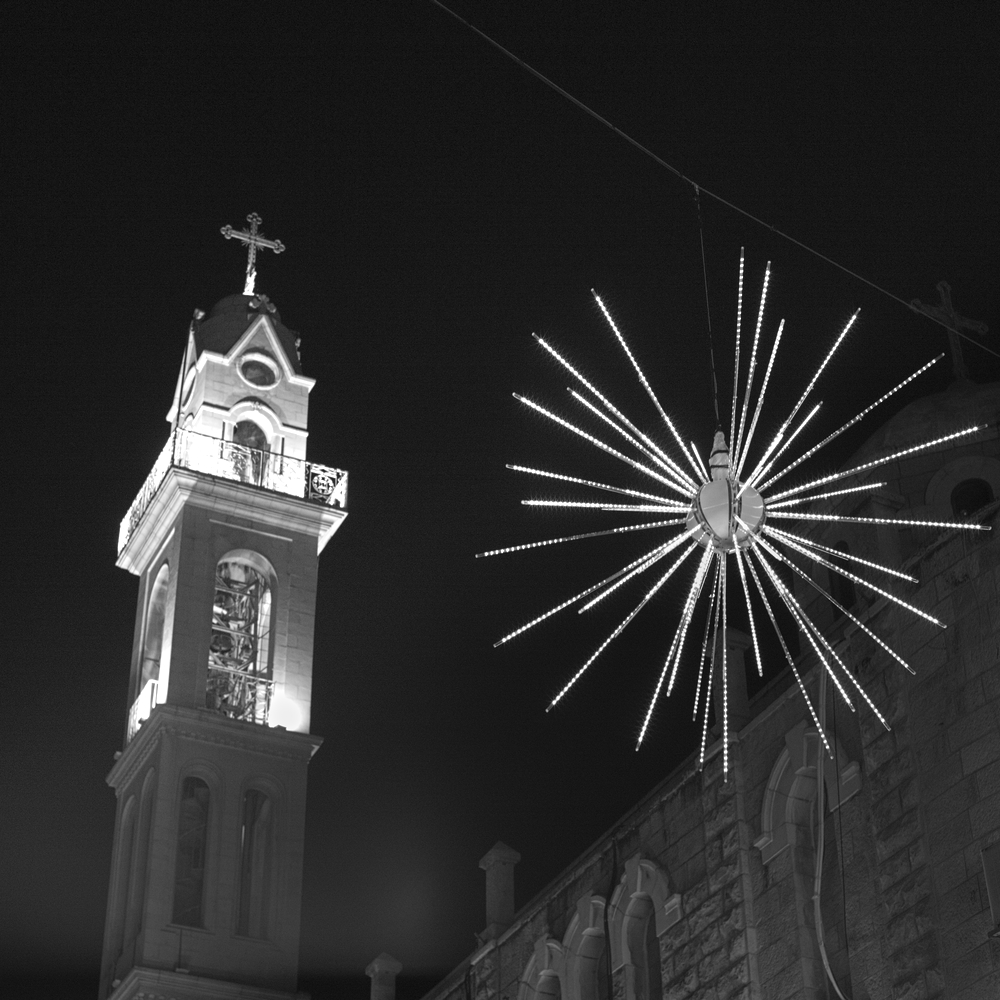
Virgin Mary’s Syrian Orthodox Church
“There will be thousands of visitors,” I groused. “Probably 50,000 from Texas alone. Tour buses parked in a line that stretches from the Church of the Nativity to Beit Sahur.”
My objections failed to shake my wife’s resolve. We were going to Bethlehem for Christmas.
May God have mercy on our souls.
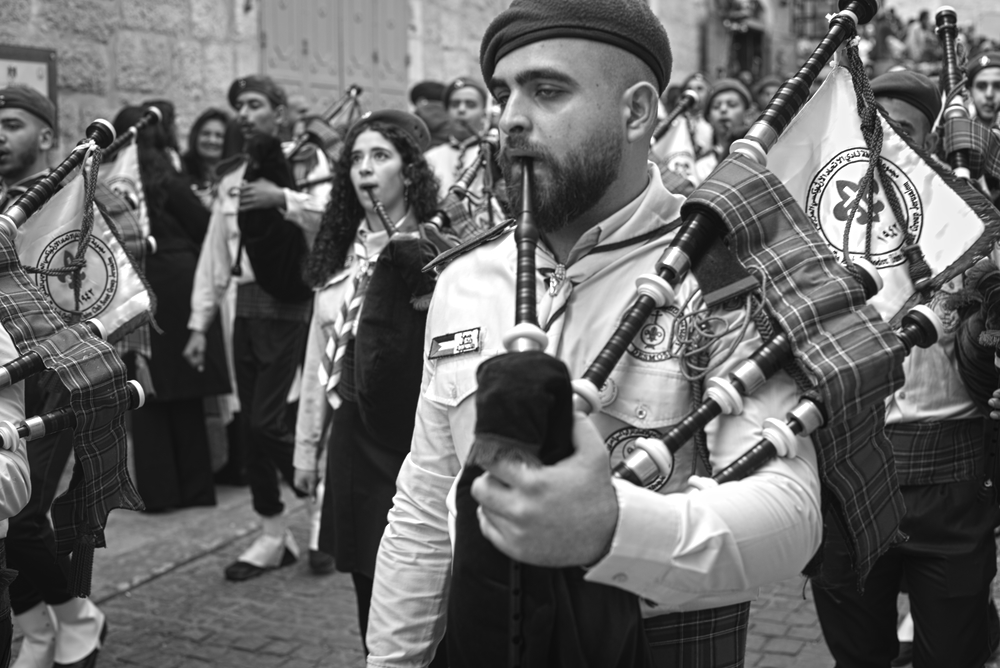
Patriarch’s Procession
My fundamental orientation trends toward the monastic, even reclusive. Crowds—loosely defined as more than three people—give me hives. The idea of spending time at what was bound to be ground zero for the December tourist population seemed foolhardy. One newspaper predicted that 120,000 tourists would visit the Holy Land this Christmas, and I knew where the center of gravity would fall.
On the other hand, if you had an opportunity to spend Christmas in Bethlehem, why wouldn't you?
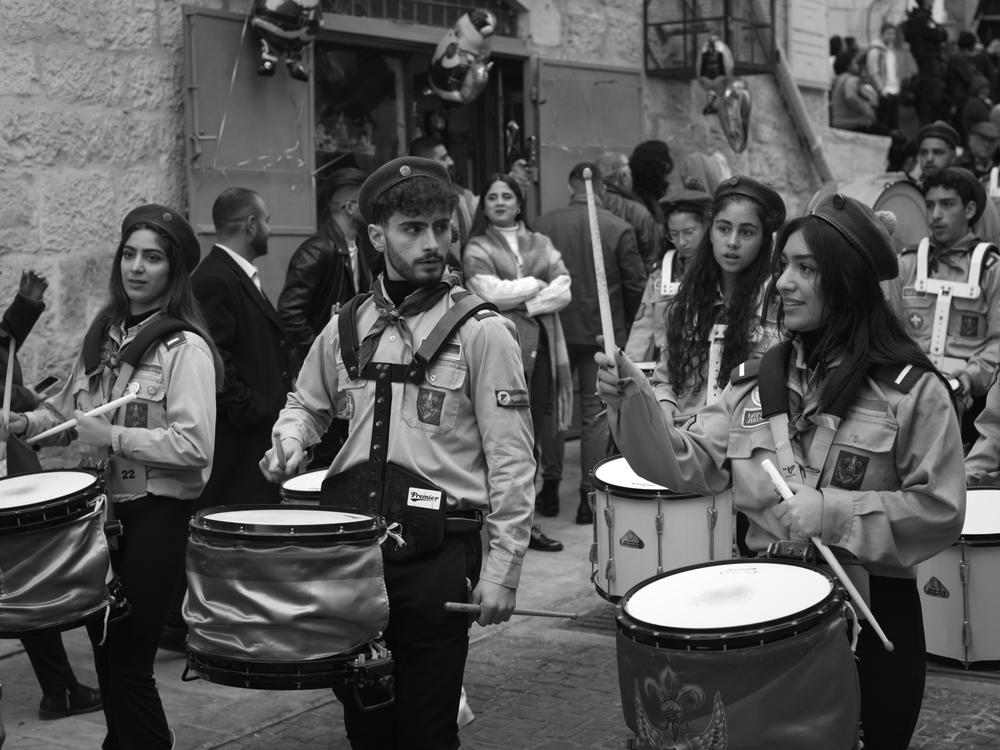
Patriarch’s Procession
Patriarchs in the Early Church
Bethlehem's Christmas festivities are officially inaugurated with the Patriarch’s Procession, a parade that welcomes the Latin Patriarch of Jerusalem to the city. Since Westerners might find the idea of a Patriarch unfamiliar, a bit of history is in order.
Near the end of the Western Roman Empire (AD 476), the church was divided into five patriarchates. Alexandria (Egypt), Antioch (Syria), and Rome (Italy) were the oldest. They claimed apostolic founders (Mark, Peter, and Paul), and the Patriarchs—the highest ranking churchman in the region—oversaw the bishops and priests under him.
After Licinius and Constantine legalized Christianity, two more patriarchs were added into the mix: Constantinople—Rome’s eastern capital—and Jerusalem. This was a response to the spread of Christianity and, in the case of Jerusalem, recognition of the city’s important role in the history of the church.
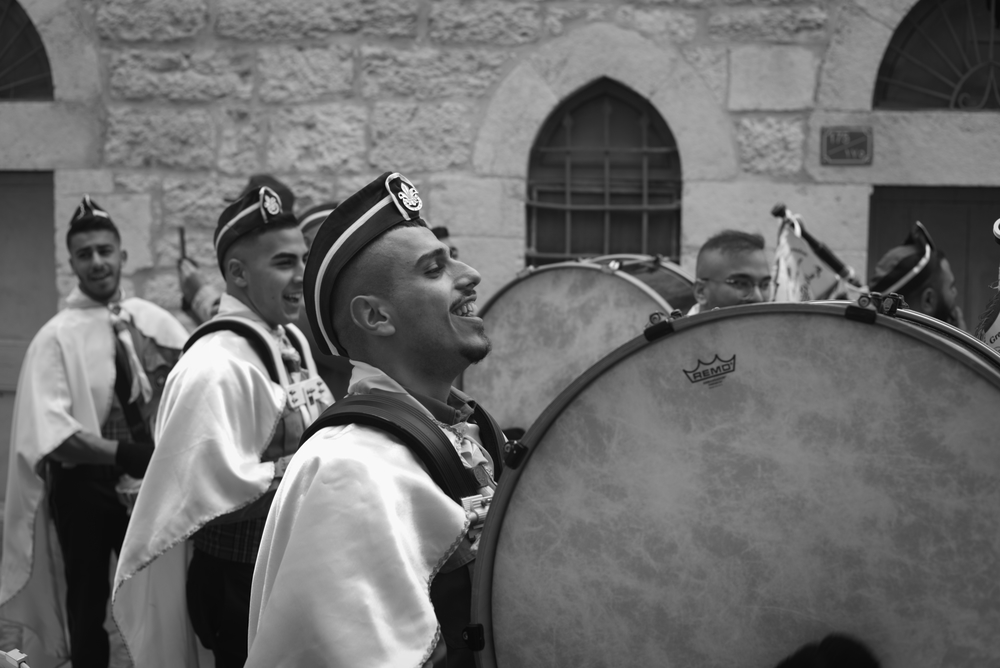
Patriarch's Procession
As time passed, Rome began to assert its primacy, claiming that the pope was the leader of the entire church. This development was rejected in the East (and for centuries in the West as well), and ultimately was one of the factors that precipitated the Great Schism in 1054, splitting the church into the Western (Latin) and Eastern (Greek) wings.
This division endures into the present.
As an ancient church historian by trade and training, I was familiar with the brief history I have just offered, but I was mystified by the idea of a Latin Patriarch. Where did that come from?
The Latin Patriarch
A bit of research uncovered what I should have guessed: the Latin Patriarchate is a relic of the Crusades. In 1099, western crusaders captured Jerusalem and established the Kingdom of Jerusalem. They carried their European brand of Christianity with them. The pope established the new office of the Latin Patriarchate to oversee the spiritual life of the Christians living in the Holy Land. The Patriarch was given the Church of the Holy Sepulchre as his official seat.
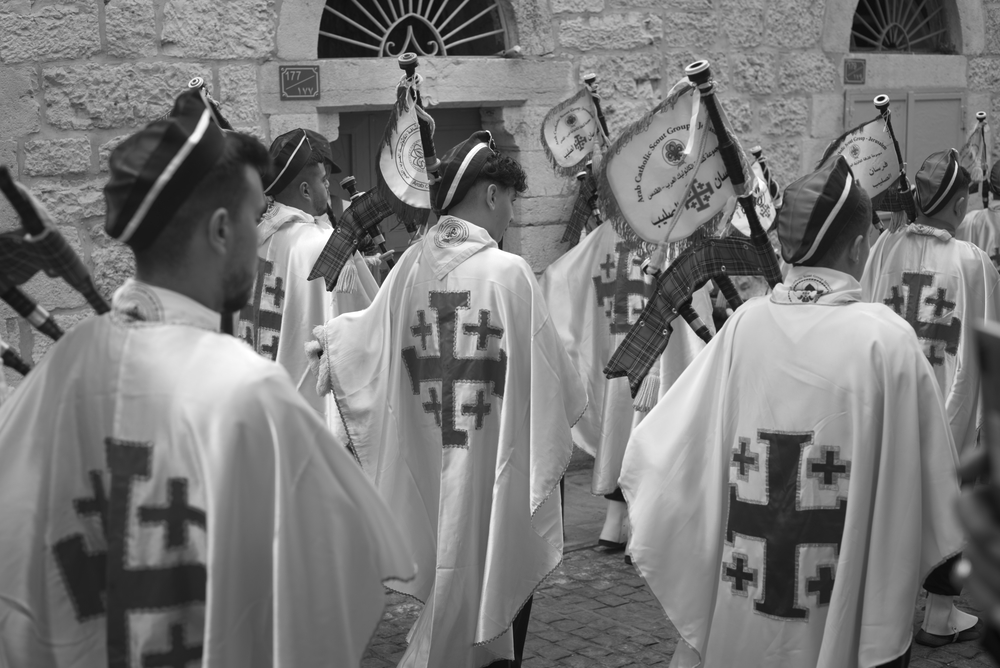
The Patriarch's Procession
Western control of the Holy Land was relatively short. After Saladin expelled the crusaders and reasserted Islamic control over the region, the Latin Patriarch retrenched in Rome. The Ottomans allowed the Patriarch to return in 1847, and since that time, as the formal equivalent of a Roman Catholic archbishop, the Latin Patriarch has been in Jerusalem.
The Great Procession
Every year the Latin Patriarch is driven to the checkpoint in the wall that separates Jerusalem and Bethlehem. After passing through the breach, he joins a procession to the Church of the Nativity.
The procession has expanded into one of the major events of the year. It takes more than three hours for the parade to wind through the narrow, stone-faced streets of the golden city. An apparently endless series of marching bands flow past—the Palestinian Catholic Scouts of Bethlehem, the Orthodox National Charitable Society, the Orthodox Tali'a Scouts—the list goes on. I lost count after the first hour.
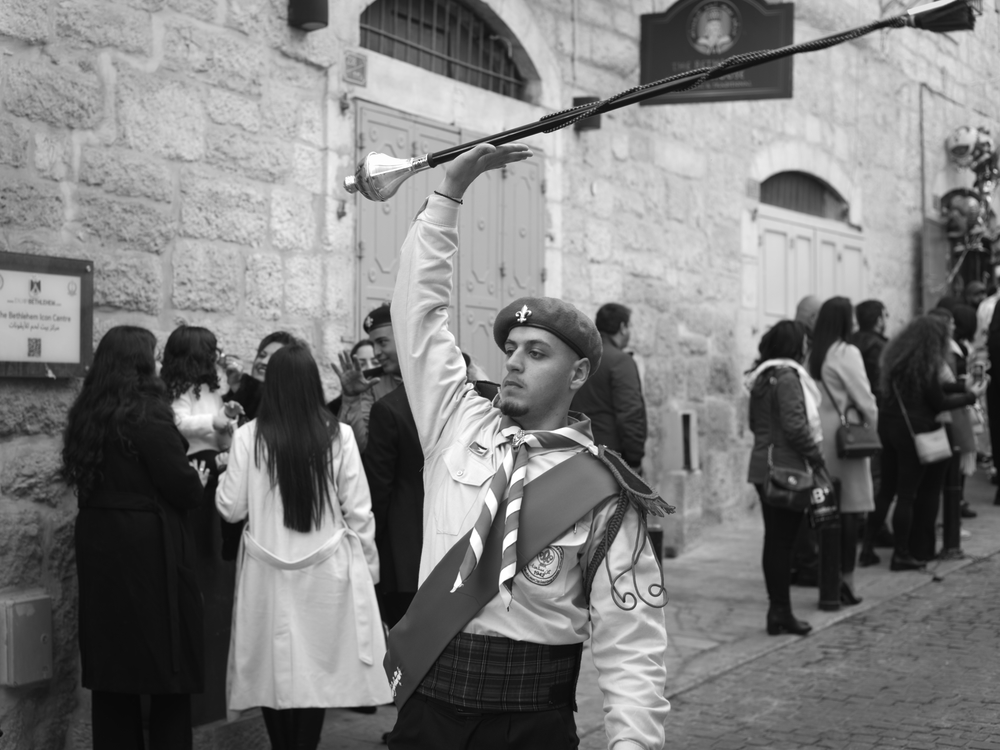
Drum major, Patriarch’s Parade
Drum majors hurl four-foot batons two stories into the air. Ranks of bagpipes skirl and drums drive their percussive pulse into the stones. Close your eyes and you could easily imagine yourself transported to Edinburgh. No one can explain why the Palestinian bands embrace this Celtic form of martial expression—it may be an artifact of the British occupation after World War I.
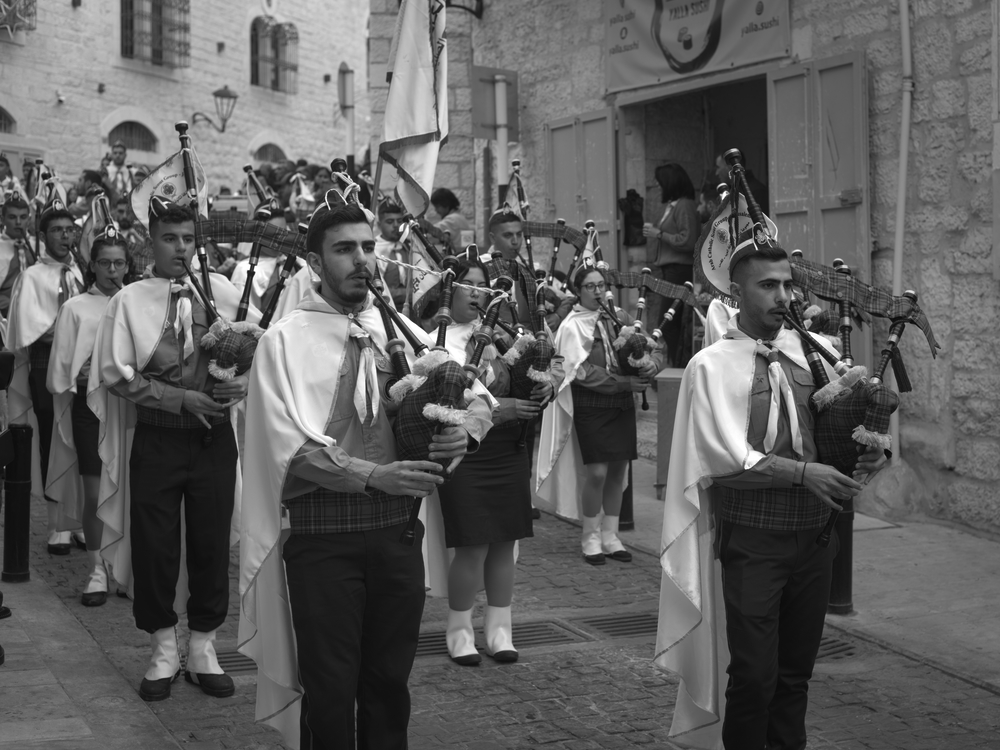
Pipers, Patriarch's Procession
Three hours later, the last band marches past. Police, men draped in ecclesiastical garb, and finally the man himself—Latin Patriarch Pierbattista Pizzaballa—gladhands his way past the spectators.
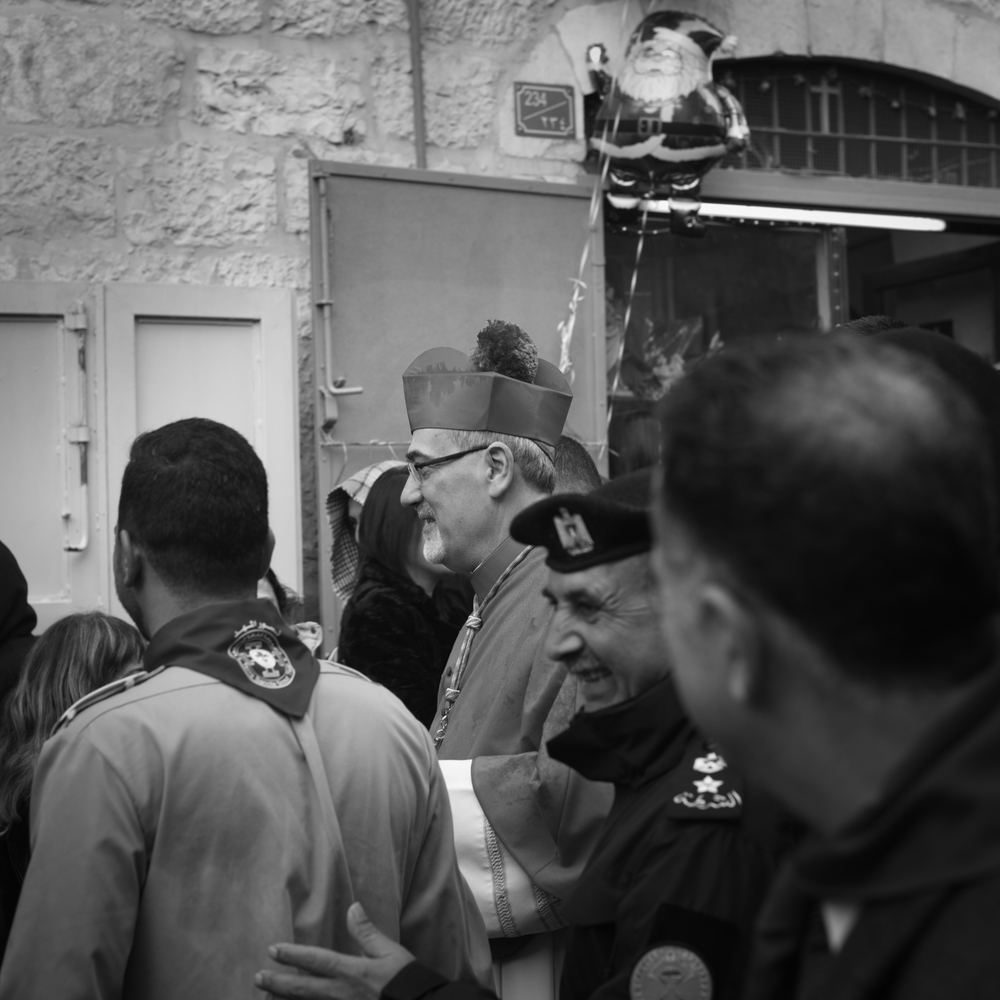
A brief glimpse of the Latin Patriarch
I can see why it takes so long.
The Patriarch’s procession ends in Manger Square, just in front of the Church of the Nativity. The Patriarch will spend several hours in the church, ending his official duties by officiating Midnight Mass. This event requires tickets and is sold out months in advance.
Crowd averse, I eschew the Patriarch’s triumphant arrival and the later mass. I rise early on Christmas Day—4:00 a.m.—and with camera in hand descend to see if the celebration is continuing. The streets are dark and empty. LED Christmas lights flash overhead in a silent, frosty display.
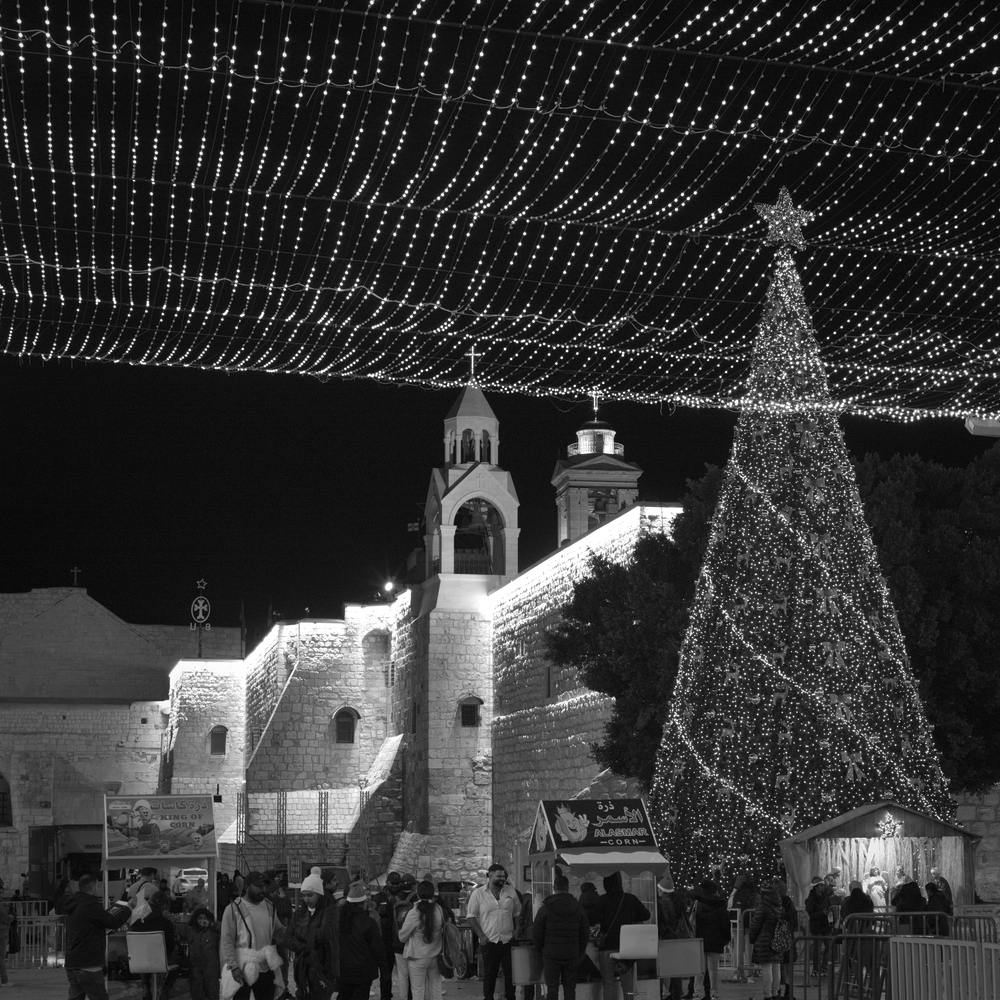
Manger Square, 4:00 a.m.
The Christmas tree still burns in Manger Square. Visitors cluster before the manger, snapping selfies in the night. A boom box blats Christmas carols, while a lonely vendor tries to generate interest in the steaming arabic coffee boiling atop his cart.
A crush of people jostle one another to reach the creche in the Church of the Nativity. They jam the doorways that restrict access to holy cave beneath the altar, and I am happy that I have no compelling reason to join the queue. I've already seen the silver star that marks the theoretical spot of Jesus’ birth.
A man stands just inside the church's main entrance, clasping a candy-cane spiraled plastic staff. A crown of heart-shaped helium balloons float above the staff's crest.
An elderly priest, draped in black, skull to foot, approaches the staff's owner and snarls in Arabic. When his words fail to achieve the desired effect, he switches languages: “You must take this outside.”
No joy. The cleric repeats his words. Still no comprehension.
The priest snatches the staff and shrieks, “Take this outside! Take this outside.” He storms through the open door and hurls the staff on the cold stones beyond the church.
Holiday stress. It can make even the most saintly among us crack.
Next door, the cloister that fronts St Catherine’s Church is completely blacked out. No light illuminates a weary pilgrim’s steps. Before the closed main doors, a small group chants antiphons in Latin. Medieval monks would have used candles to light their text, but the moderns shine mobile phone flashlights on their pages. When they finish, they depart, like a flock of LED fireflies.
Inside the tour group-packed church, a mass begins. I poke my head in for a moment, judge it a potential COVID hotspot, and withdraw to the cloister. I maintain a lonely vigil, sitting near the statue of Saint Jerome. The mosque at the northern end of Manger Square bursts into the call to morning prayer, adding an ecumenical spritz to the dawn.
Merry Christmas from Bethlehem.
If you are enjoying this series, why not subscribe to Richard's monthly newsletter, What's New in Old News? The Peripatetic Historian is on the road, roaming the world and compiling fresh adventures. Don't miss out. Click here to join the legions of above-average readers who have already subscribed.